PRISM
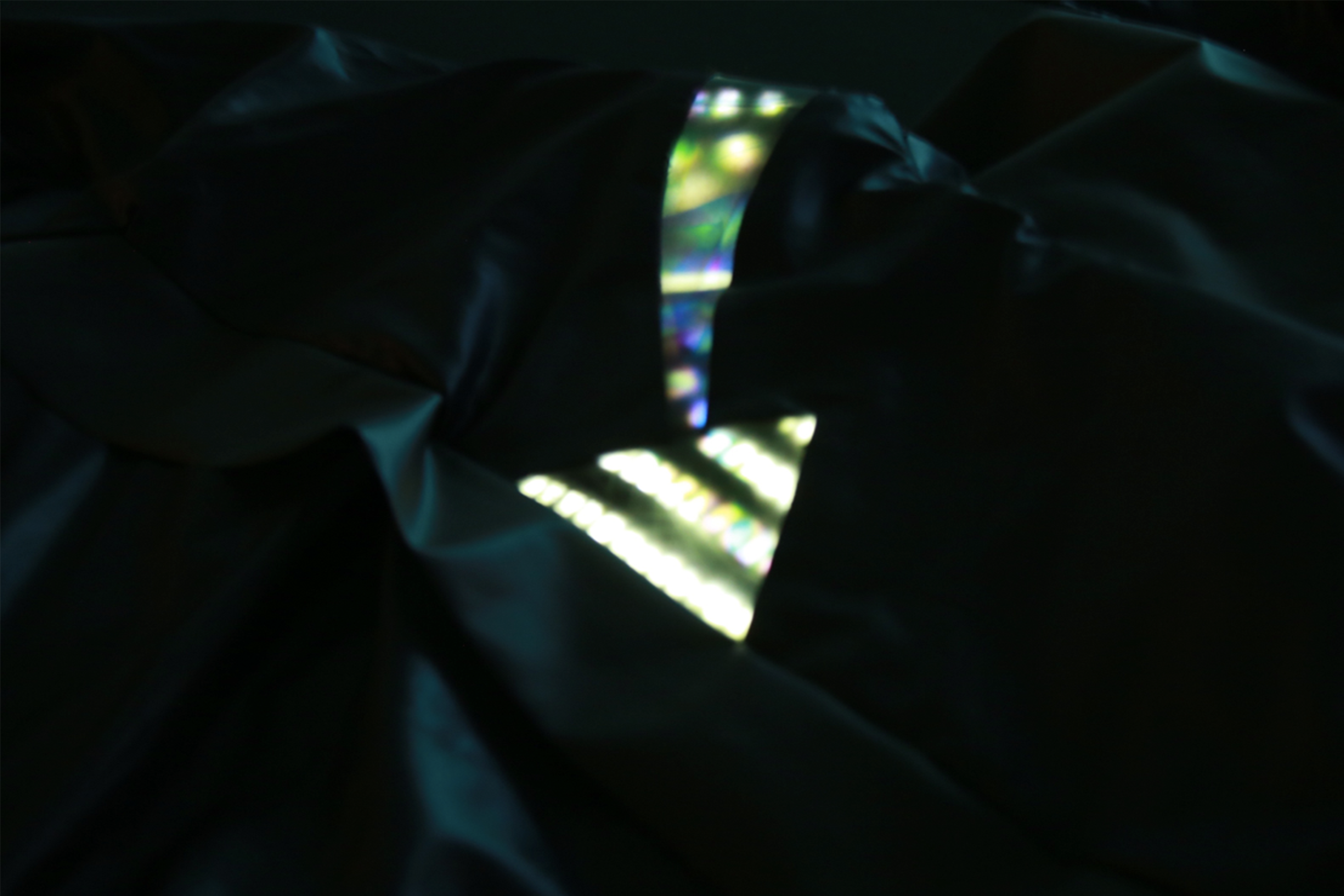
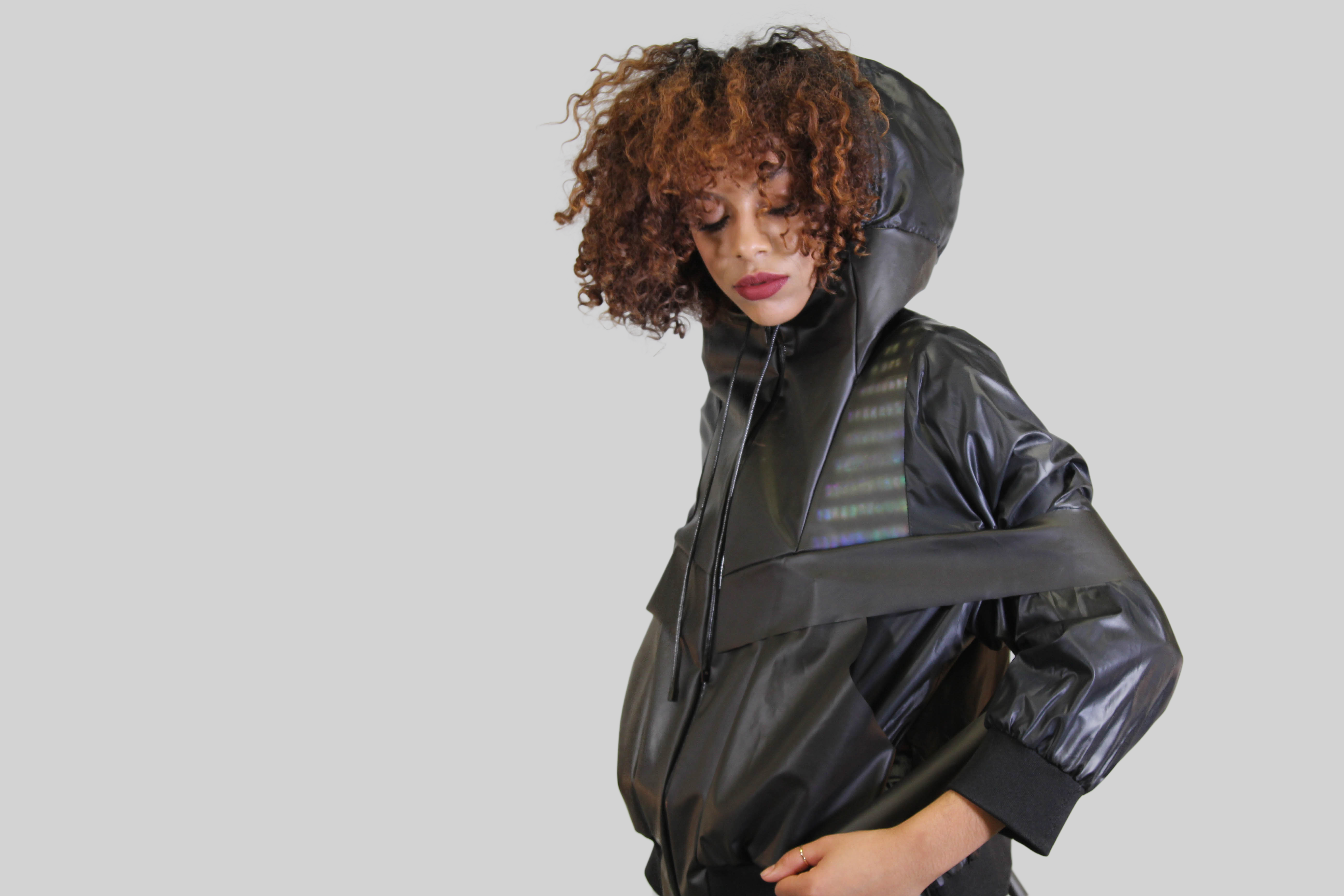
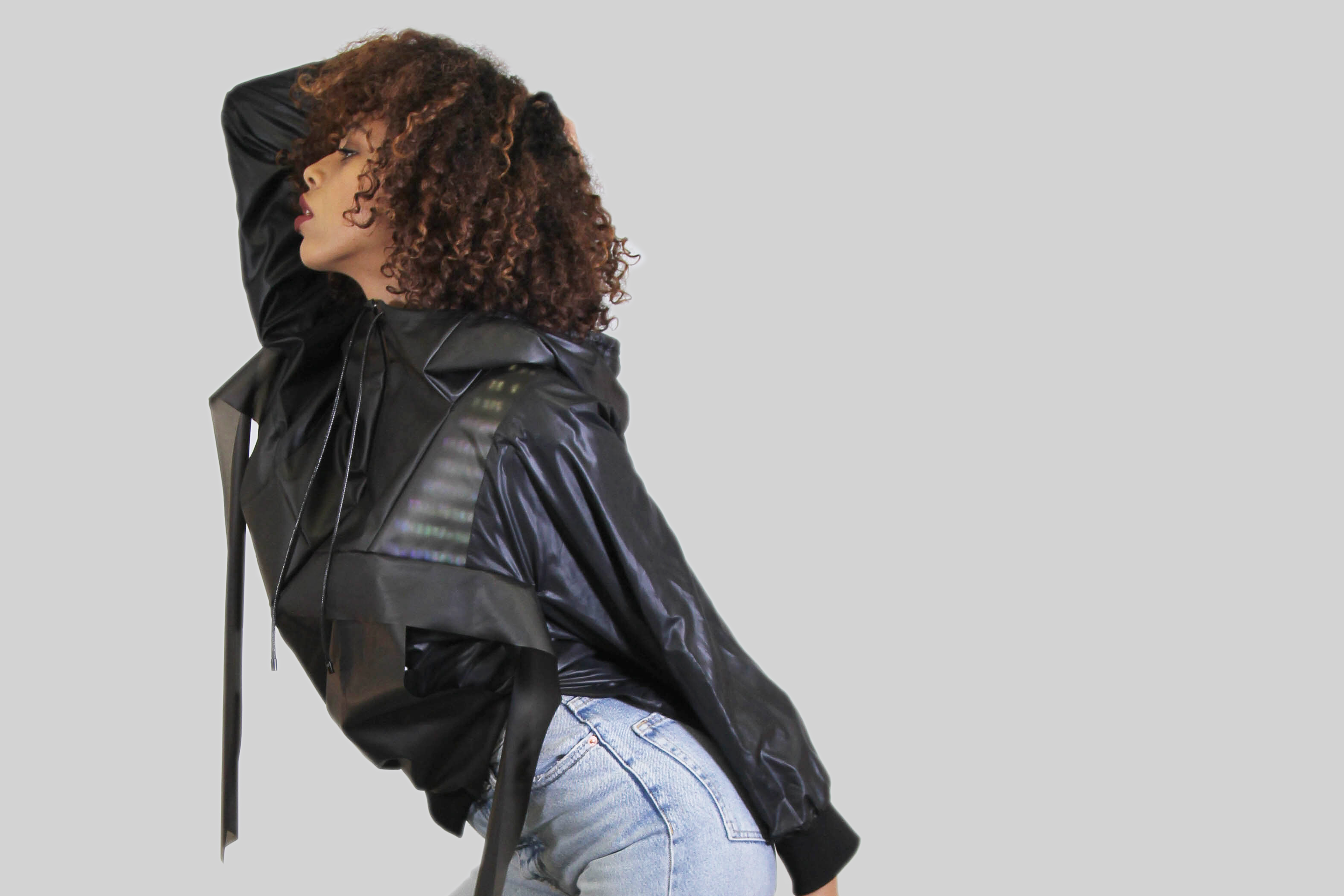
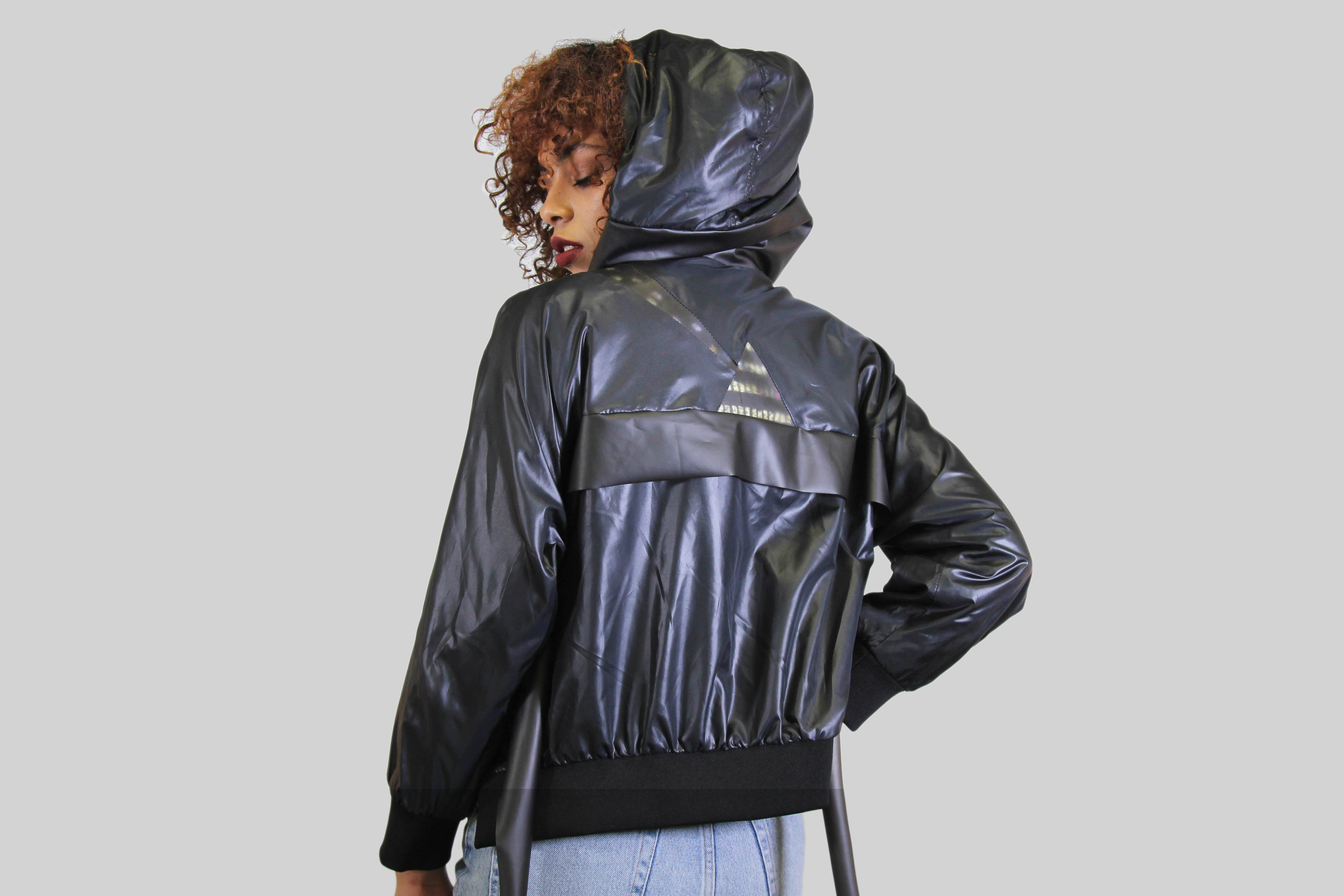
Overview
Prism is a waterproof windbreaker designed with Loomia’s LEL technology. The wearer can personalize the light panel to be on/off, or fade in & out synchronized to rhythmic breathing patterns optimal for running at the speed of light!
Background
![]()
In the summer of 2018, I was selected by Loomia as a Creator Lab fellow to work alongside their product team and engineers to design a use case for their core product, the Loomia Electronic Layer (LEL). The goal was to learn from each other and document an integrated design process with limitations and parameters of the technology in mind from conceptualization to fabrication.
LEL has a range of applications. I chose to work with LEL’s lighting capability, which uses very thin profile nano-LED technology.
![You can read more about LEL’s applications on their website here.]()
Context & Research
One limitation of LEL lighting is color options — the LEDs are available only in bright white, not programmable RGB.
To utilize lighting creatively and effectively, I set out to research techniques for augmenting human perception of light and color.
![]()
![]()
How we perceive color is relative to context.
Color is not a property an object has or possesses, but rather a perceived phenomena that results from the interaction between light, the properties of objects, and how our brain interprets that information.
This phenomena is evident in dispersion, polarized light, and birefringent materials.
![]()
![]()
Filters containing quinine crystals can polarize light so that light waves move on a single plane rather than in all random directions.
When holding up two polarizing filters at perpendicular angles (b), light is unable to pass through so all that is visible is black (absence of light). Two polarizing filters in parallel allows light to pass through (c). Only some light can pass through when placed at an angle (d). The upper right animation demonstrates this phenomena. The bottom animation demonstrates a combination of linear and circular polarizers that disperse the visible color spectrum. This is what really drew my interest.
![]()
Every material has an index of refraction. Light travels through birefringent (doubly refracting) materials such as cellophane at two different speeds. When polarized light enters the material, its direction of polarization will probably not line up with the length of the material. If the light is polarized in a direction that does not line up, its direction of polarization will be resolved into two perpendicular components. One of these components will be parallel to the length of the material, and one will be perpendicular.
I learned that with strategic implementation of these techniques and materials, I am not confined to one color after all.
Materials Testing
I sourced materials for testing and successfully recreated my findings.
![]()
Concept Ideation
I presented my materials research to the Loomia team and we agreed it would lend well to a garment that involves motion.
![]()
I proposed a windbreaker / running jacket.
A prism motif disperses an array of colors over the shoulder, with ribbon cascading down the sleeves for movement and allusion to crossing the finish line. The customized LEL serves as the essential backdrop for illuminating the context of color perception, and exhibits color change when the runner is in motion.
The front left pocket houses the battery and controller to animate the panel to five rythmic breathing patterns.
![]()
Product Development
Through muslin prototyping, I iterated on the form and fit to develop a sporty silhouette.
![]()
![]()
I also ideated the circuit design, stack-up, LED configuration, and interconnect placement for customizing the LEL. Specifications were passed to Loomia’s team of engineers to develop a functional prototype to integrate in the final garment. See images below.
![]()
![]()
![]()
Press
Currently, Prism is on display at the Loomia Prototyping Lab in New York City.
You can read my Loomia Creator Lab profile on Medium.
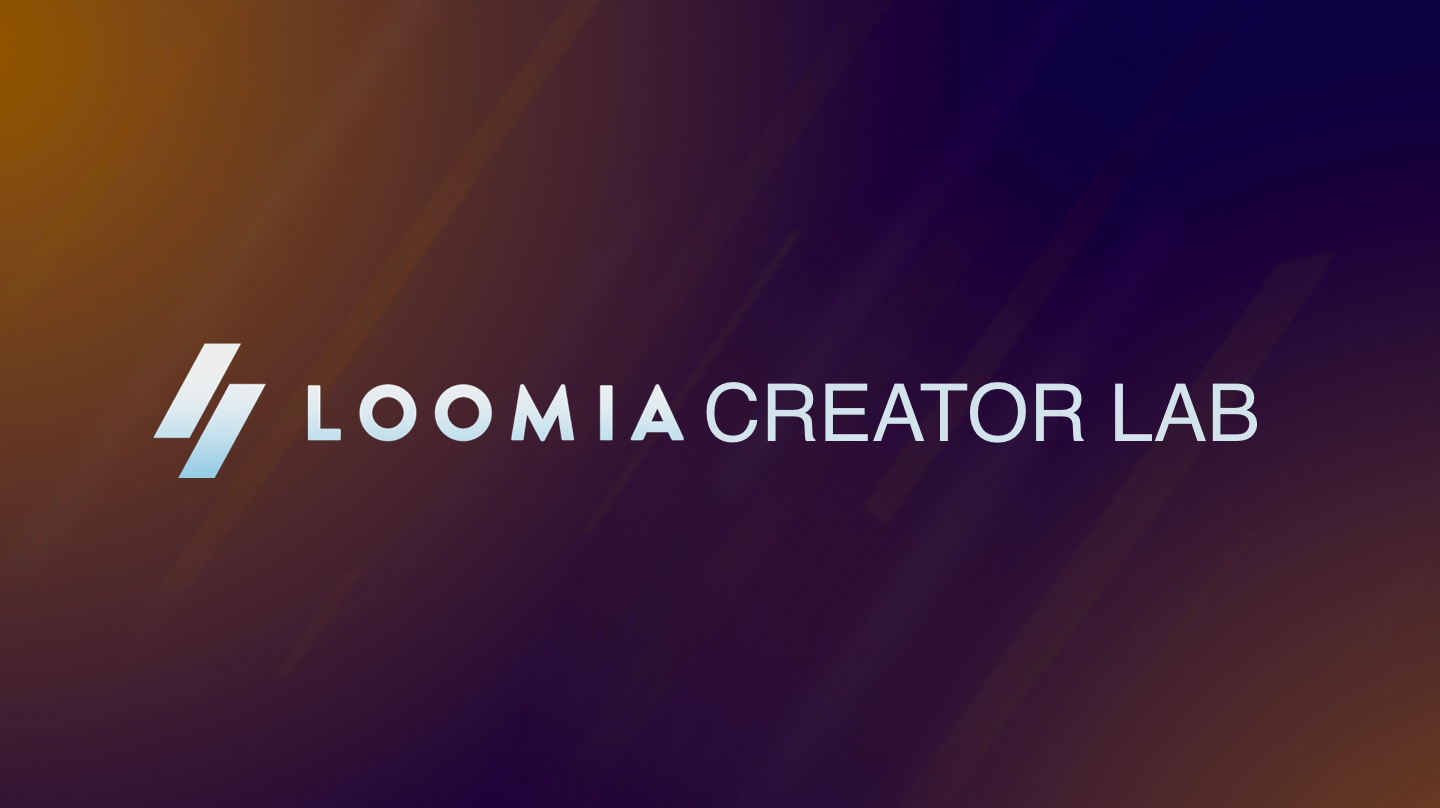
In the summer of 2018, I was selected by Loomia as a Creator Lab fellow to work alongside their product team and engineers to design a use case for their core product, the Loomia Electronic Layer (LEL). The goal was to learn from each other and document an integrated design process with limitations and parameters of the technology in mind from conceptualization to fabrication.
LEL has a range of applications. I chose to work with LEL’s lighting capability, which uses very thin profile nano-LED technology.
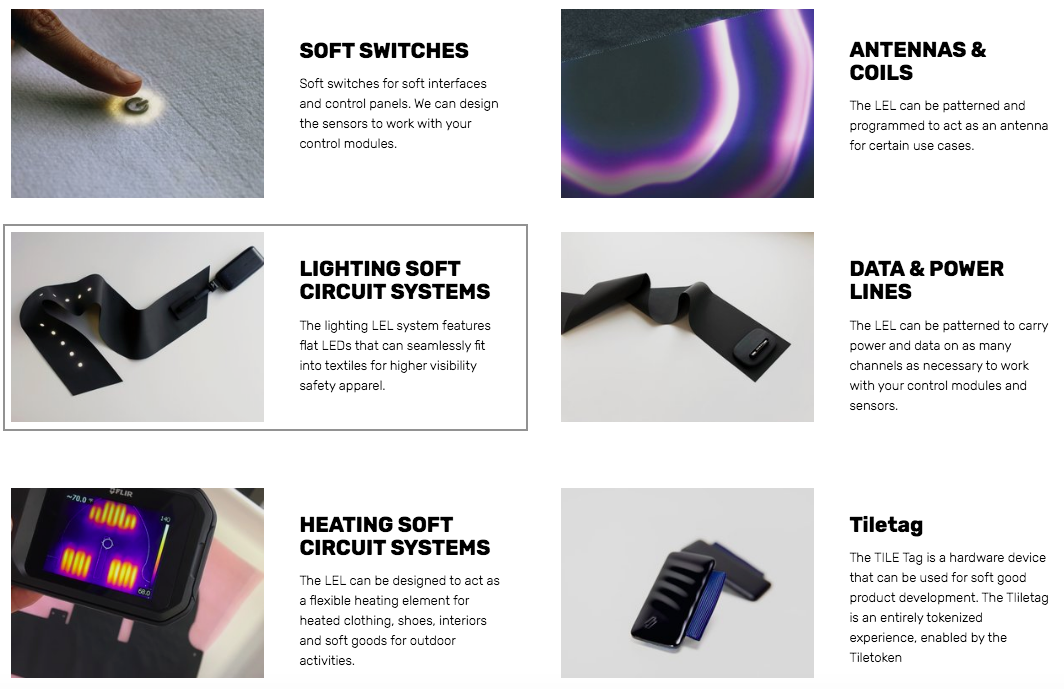
You can read more about LEL’s applications on their website here.
Context & Research
One limitation of LEL lighting is color options — the LEDs are available only in bright white, not programmable RGB.
To utilize lighting creatively and effectively, I set out to research techniques for augmenting human perception of light and color.


How we perceive color is relative to context.
Color is not a property an object has or possesses, but rather a perceived phenomena that results from the interaction between light, the properties of objects, and how our brain interprets that information.
This phenomena is evident in dispersion, polarized light, and birefringent materials.
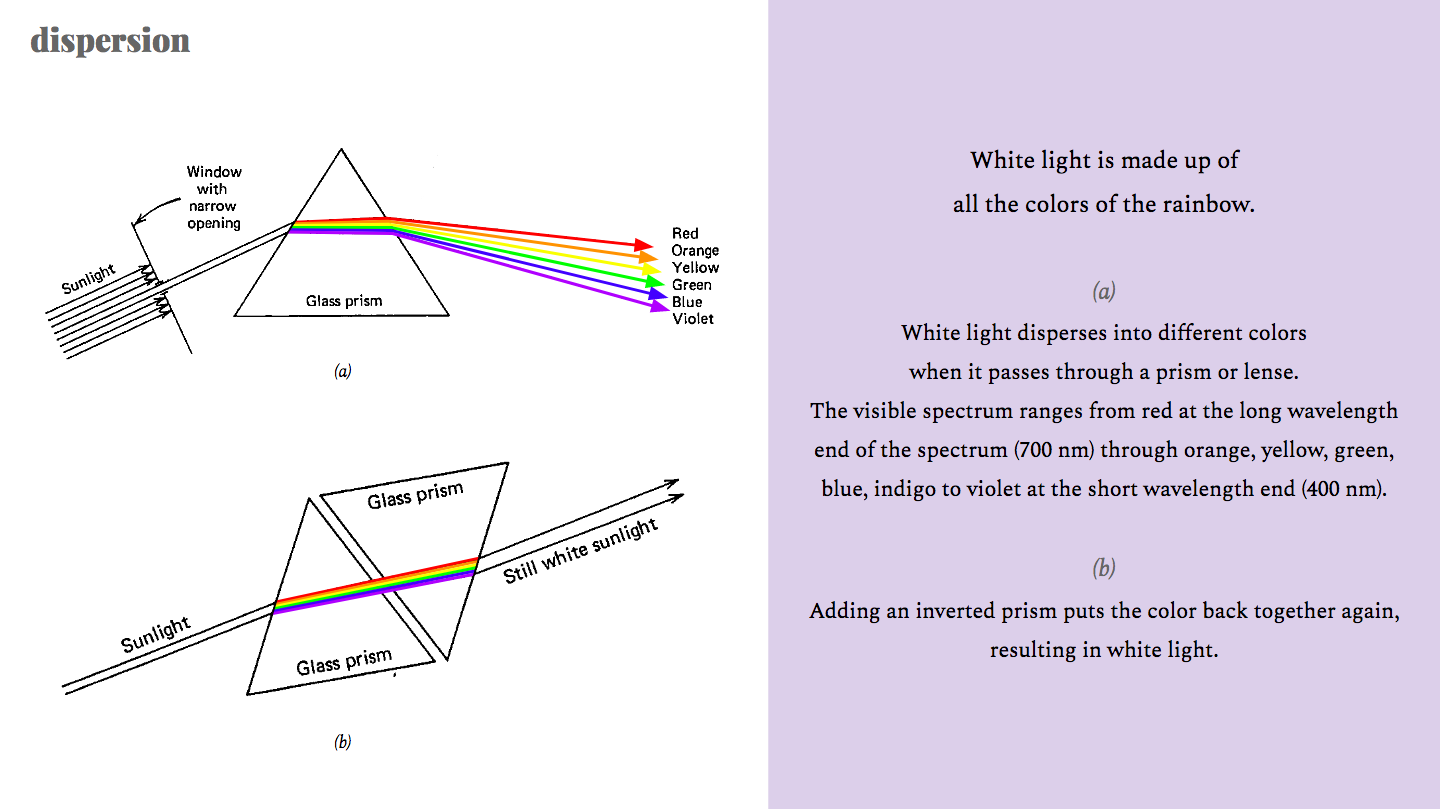

Filters containing quinine crystals can polarize light so that light waves move on a single plane rather than in all random directions.
When holding up two polarizing filters at perpendicular angles (b), light is unable to pass through so all that is visible is black (absence of light). Two polarizing filters in parallel allows light to pass through (c). Only some light can pass through when placed at an angle (d). The upper right animation demonstrates this phenomena. The bottom animation demonstrates a combination of linear and circular polarizers that disperse the visible color spectrum. This is what really drew my interest.

Every material has an index of refraction. Light travels through birefringent (doubly refracting) materials such as cellophane at two different speeds. When polarized light enters the material, its direction of polarization will probably not line up with the length of the material. If the light is polarized in a direction that does not line up, its direction of polarization will be resolved into two perpendicular components. One of these components will be parallel to the length of the material, and one will be perpendicular.
I learned that with strategic implementation of these techniques and materials, I am not confined to one color after all.
Materials Testing
I sourced materials for testing and successfully recreated my findings.

Concept Ideation
I presented my materials research to the Loomia team and we agreed it would lend well to a garment that involves motion.

I proposed a windbreaker / running jacket.
A prism motif disperses an array of colors over the shoulder, with ribbon cascading down the sleeves for movement and allusion to crossing the finish line. The customized LEL serves as the essential backdrop for illuminating the context of color perception, and exhibits color change when the runner is in motion.
The front left pocket houses the battery and controller to animate the panel to five rythmic breathing patterns.

Product Development
Through muslin prototyping, I iterated on the form and fit to develop a sporty silhouette.


I also ideated the circuit design, stack-up, LED configuration, and interconnect placement for customizing the LEL. Specifications were passed to Loomia’s team of engineers to develop a functional prototype to integrate in the final garment. See images below.



Press
Currently, Prism is on display at the Loomia Prototyping Lab in New York City.
You can read my Loomia Creator Lab profile on Medium.